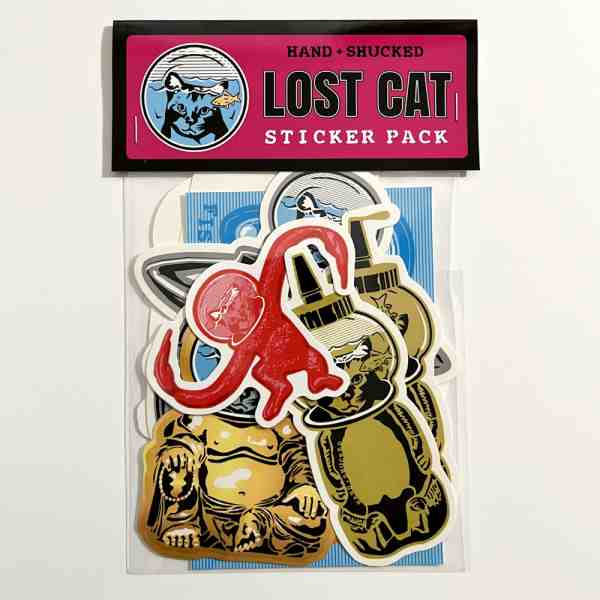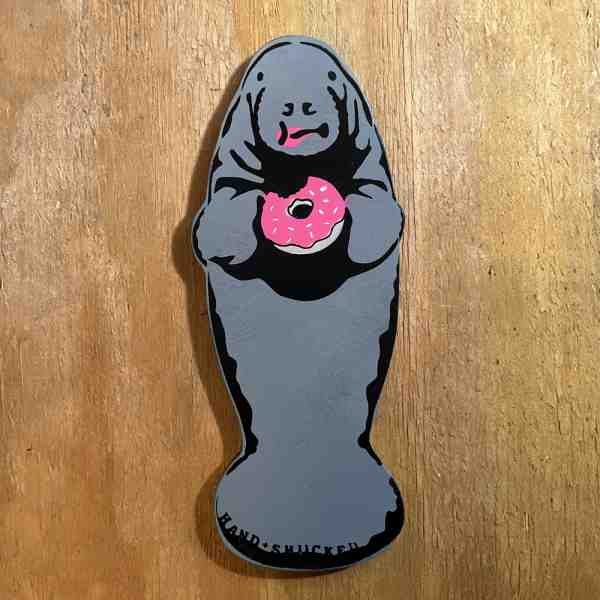Why So Many Cats? Exploring Key West’s Feline Fascination
Why are there so many cats in Key West? It’s a question that piques the curiosity of many visitors to this captivating island. Here’s a quick rundown:
- The legacy of Ernest Hemingway, a legendary American author, who adored cats, especially those with the polydactyl trait.
- Key West’s maritime history, playing a pivotal role as sailors brought cats to control rodent populations on ships.
- The warm, tropical climate of Key West offering an ideal environment for cats to flourish.
While many know Key West for its vibrant culture and relaxed vibe, the island’s feline residents hold a special place in hearts and history. The six-toed wonders, often called “Hemingway cats,” trace their origins back to a special pet gifted to Hemingway himself: Snow White, a polydactyl cat. These cats roam freely on the grounds of the Ernest Hemingway Home and Museum, adding to its unique charm and allure.
I’m Chris Higgins, and I’ve been immersed in the artistic mix of Key West for over a decade. Driven by a passion for capturing the essence of this island, I’ve observed the feline aspect that fascinates both visitors and locals alike. Let’s explore how these cats have shaped Key West in more ways than one.
The Origin of Key West’s Cats
The story of Hemingway’s six-toed cats begins with a ship’s captain and a unique gift. In the 1930s, Ernest Hemingway was given a white polydactyl cat named Snow White by Captain Harold Stanley Dexter. This cat was no ordinary feline; she possessed extra toes, a trait known as polydactyly. This genetic anomaly, while uncommon, was considered a sign of good luck, especially among sailors.
Captain Dexter, like many seafarers of his time, likely believed in the superstition that polydactyl cats were excellent mousers and brought fortune to ships. These cats, with their extra digits, were thought to have better balance and climbing abilities—ideal traits for a sea voyage. Snow White, with her distinctive paws, became the matriarch of a feline dynasty that thrives to this day.
Hemingway, an avid cat lover, welcomed Snow White into his Key West home. Over time, Snow White’s descendants multiplied, and the six-toed trait continued to appear in many of them. Today, these cats are affectionately known as “Hemingway cats” and are a beloved feature of the Ernest Hemingway Home and Museum.
The museum now houses approximately 60 cats, about half of which display the polydactyl trait. All are descendants of Snow White, and each carries the polydactyl gene. This means even cats with the usual number of toes can pass on the trait to their offspring.
The tradition of naming these cats after famous personalities, a practice started by Hemingway himself, continues today. Visitors to the museum can meet cats named after historical figures and celebrities, adding a touch of whimsy to the literary legacy of the property.
The origin of these cats is a tale of maritime tradition, genetic quirks, and a writer’s affection for his feline companions. It has left an indelible mark on Key West, creating a unique cultural and historical attraction that draws visitors from around the world.
Why Are There So Many Cats in Key West?
The maritime past of Key West plays a significant role in explaining why the island is home to so many cats. In the days before modern pest control, sailors relied on cats to keep ships free from rodents. When these ships docked in Key West, some of the cats made their way ashore, finding a welcoming environment with mild weather and plenty of food. Over time, these cats settled on the island, contributing to the local feline population.
A fascinating aspect of Key West’s cats is the prevalence of the polydactyl gene. This genetic trait leads to cats having extra toes, a feature that was particularly valued by sailors. Polydactyl cats, like those descended from Hemingway’s Snow White, were believed to be superior hunters and more stable on a ship’s deck. This trait has persisted in Key West, largely due to the legacy of Hemingway’s cats and the continued presence of their descendants.
Moreover, Key West’s cats enjoy a degree of freedom that is uncommon in many urban areas. The island is known for its free-roaming cats, which can be seen lounging in gardens, wandering along sidewalks, and even visiting local businesses. This freedom is part of the island’s charm and reflects a community that accepts its feline residents.
The combination of these historical, genetic, and cultural factors has resulted in a thriving cat population in Key West. The island’s unique relationship with its cats is a testament to its rich maritime heritage and the enduring appeal of its most famous literary resident, Ernest Hemingway.
The Hemingway Home and Museum
The Ernest Hemingway Home and Museum is a must-see attraction in Key West. This historic site offers a unique glimpse into the life of one of America’s most celebrated authors. But let’s be honest—many visitors are just as excited to meet the famous Hemingway cats as they are to explore the house itself.
A Feline-Friendly Destination
The museum is home to around 60 cats, many of which are polydactyl. These cats are direct descendants of Hemingway’s original feline companion, Snow White. Each cat at the museum has a name, often inspired by famous people, continuing a tradition Hemingway himself started. Imagine meeting a cat named after a Hollywood star or a historical figure—it’s all part of the charm!
What Visitors Can Expect
Visitors to the museum can wander through lush gardens where cats roam freely. These gardens provide a picturesque setting where you might find a cat napping in the sun or perched on a stone wall. The cats are not just part of the scenery; they’re a major draw for tourists. The museum even encourages guests to interact with the cats, though picking them up is not allowed.
Inside the house, you’ll find Hemingway’s writing studio, where he penned some of his most famous works. The studio offers a glimpse into the author’s creative process, complete with a vintage typewriter and other personal items. As you explore, you’ll likely encounter a few cats lounging in Hemingway’s favorite spots.
A Unique Visitor Experience
What makes the Hemingway Home and Museum stand out is how seamlessly the cats are integrated into the visitor experience. They are not just pets; they are an integral part of the museum’s history and appeal. Whether you’re a literature enthusiast or a cat lover, the museum offers a unique blend of both worlds.
The Unique Traits of Hemingway’s Cats
Ernest Hemingway’s cats are famous not just for their lineage but also for their unique traits. One of the most intriguing features of these cats is their polydactyl trait, which means they have extra toes. This genetic abnormality is not just a quirky physical feature; it has a fascinating history tied to maritime traditions and Hemingway’s own life.
The Polydactyl Trait
Polydactyl cats, often called “mitten cats” because their extra toes make their paws look like mittens, have a genetic mutation that causes them to have more toes than the typical cat. Normally, cats have five toes on their front paws and four on their back paws. Hemingway’s cats can have up to seven toes on each paw. This trait is not exclusive to any specific breed and can appear in various colors and patterns.
Hemingway’s Six-Toed Cats are direct descendants of a white polydactyl cat named Snow White, gifted to Hemingway by a ship’s captain. In maritime folklore, polydactyl cats were considered good luck, especially on ships, because sailors believed their extra toes gave them better balance. This maritime past may explain why Key West, with its rich history of seafaring, has so many of these unique cats.
Genetic Abnormality and Its Impact
The polydactyl gene is dominant, meaning if a polydactyl cat mates with a non-polydactyl cat, their kittens have a high chance of inheriting the trait. This has led to a robust population of polydactyl cats in Key West, particularly at the Hemingway Home and Museum. Despite their genetic abnormality, these cats are healthy and live normal, active lives.
Cat Personalities
Beyond their physical traits, Hemingway’s cats are known for their distinct personalities. Each cat is named after a famous person, a tradition started by Hemingway himself. This naming convention adds a layer of charm and personality to each feline resident. The cats are known to respond to their names, especially when called by someone they are fond of.
Visitors often find the cats lounging in the sun or exploring the lush gardens of the museum. Each cat has its own quirks and preferences, making them as much a part of the museum’s appeal as the historical artifacts. The museum staff is well-acquainted with each cat’s personality and can share anecdotes about their behaviors and interactions with visitors.
The unique traits of Hemingway’s cats—both physical and behavioral—make them an integral part of the Key West experience. Whether you’re drawn in by their extra toes or their storied names, these cats provide an engaging glimpse into the legacy of Ernest Hemingway.
Frequently Asked Questions about Key West’s Cats
Why are there 6-toed cats in Key West?
The presence of 6-toed cats, or polydactyl cats, in Key West is largely due to Ernest Hemingway and his beloved pets. These cats have a genetic trait that results in extra toes, making their paws look like mittens. The story begins with a ship’s captain who gifted Hemingway a white polydactyl cat named Snow White. Sailors often believed that polydactyl cats brought good luck and had superior balance on ships, which is why they were popular among them. This maritime tradition found a home in Key West, a place with a rich nautical history.
The polydactyl gene is dominant, meaning it easily passes from one generation to the next. As a result, many of Snow White’s descendants still roam the grounds of the Hemingway Home and Museum today.
Are there a lot of cats in Key West?
Yes, Key West is known for its significant feline population, particularly at the Hemingway Home and Museum. The museum is home to around 60 cats, many of which are descendants of Hemingway’s original six-toed cats. These cats have become an iconic part of the museum experience, attracting visitors from all over the world.
While the museum is a popular spot for cat enthusiasts, it’s not the only place you’ll spot cats in Key West. The island’s warm climate and laid-back lifestyle create a welcoming environment for cats, contributing to their abundance.
What happened to all the cats in Key West?
The cats of Key West, especially those at the Hemingway Museum, are well cared for. The museum takes great responsibility in maintaining the health and welfare of these feline residents. Routine veterinary care, including treatments for ear mites, fleas, and worms, is provided. The cats also receive annual vaccinations and are protected against various parasites.
The descendants of Snow White continue to thrive under the museum’s care, living comfortably on the lush, subtropical grounds. The museum staff is dedicated to preserving the legacy of Hemingway’s cats while ensuring their current generations lead happy, healthy lives.
In short, the cats of Key West, particularly those at the Hemingway Home and Museum, are a cherished part of the island’s charm and history. They embody the spirit of Hemingway himself—distinct, adventurous, and deeply connected to the sea.
Conclusion
Key West is a place where history, culture, and a unique fascination with felines come together in a charming blend. This island’s love for cats is not just a quirk but a reflection of its maritime past and the influence of literary giant Ernest Hemingway. At the heart of this feline fascination is the Hemingway Home and Museum, where the legacy of Hemingway’s six-toed cats continues to captivate visitors.
Within this vibrant cultural mix, Handshucked Designs adds its own artistic flair. Our distinctive creations, like the “Lost Cat” series, draw inspiration from Key West’s rich history and its iconic feline residents. Our art and designs celebrate the island’s unique charm and the captivating stories that make Key West a beloved destination.
Whether you’re exploring the island’s history, enjoying the laid-back lifestyle, or simply admiring the many cats that call Key West home, you’ll find that this island is a place where creativity and culture thrive. At Handshucked Designs, we invite you to find our art and apparel, inspired by the very essence of Key West and its enduring feline allure.
For more on our unique creations and to explore our collection, visit our Handshucked Designs website. Dive into Key West’s artistic spirit and perhaps take a piece of its feline fascination home with you.






